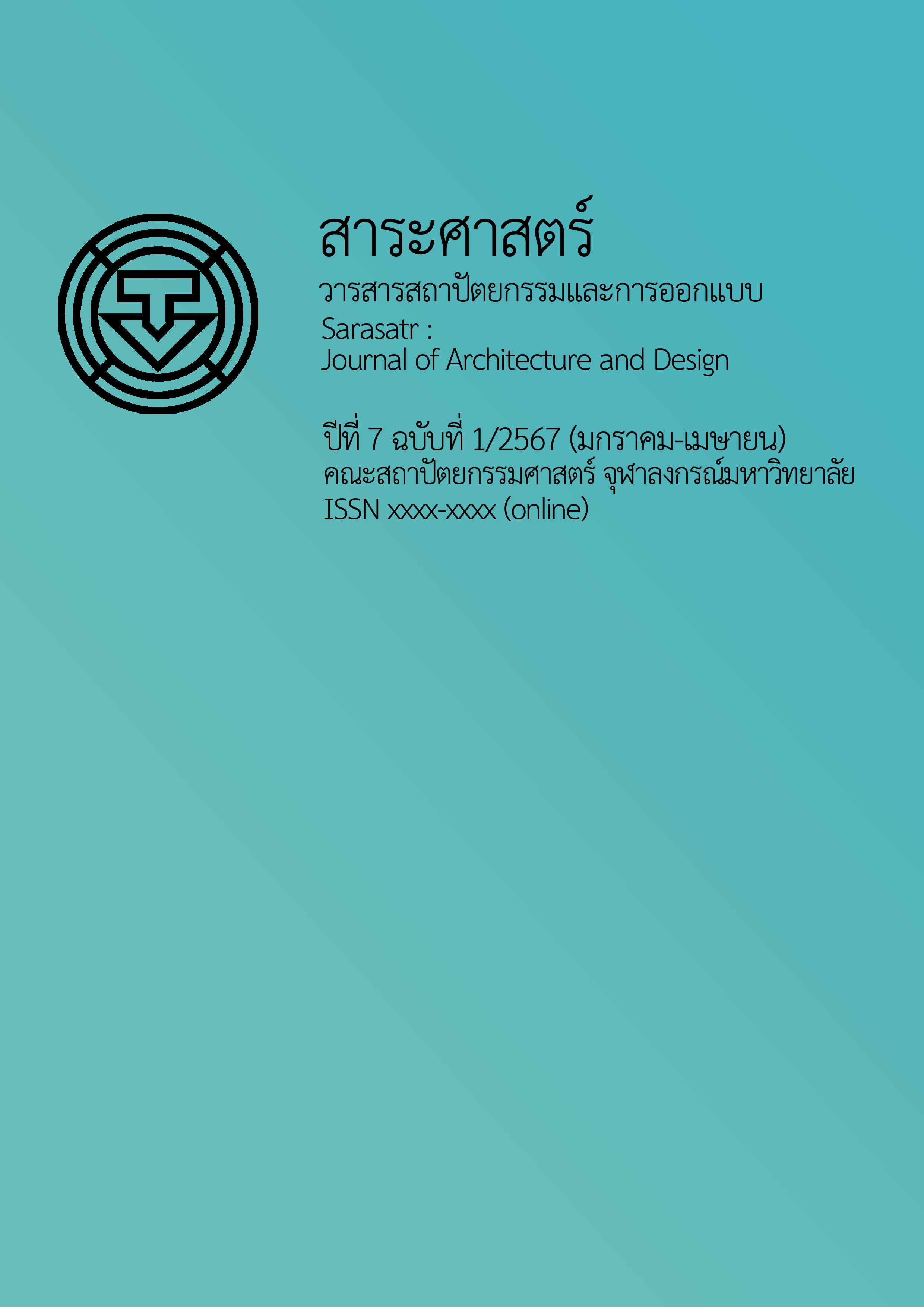Behavior, Decision Factor and Satisfaction of Natural Hot Spring Tourists: Case Studies of Porn Rang Hot Spring, Taryn Hot Spring in Ranong, and Wareerak Hot Spring and Wellness in Krabi
Main Article Content
Abstract
The trend of health tourism at natural hot spring destinations in Thailand has been growing significantly, with both the public and private sectors showing interest and promoting wellness tourism businesses. This research’s objectives are to study the demographic and behavior of tourists at natural hot spring tourist destinations, to study the decision factors and satisfaction of tourists towards the tourism components of natural hot spring tourist destinations and to propose development guidelines for natural hot spring tourist destinations. The study includes a sample group of tourists three locations which are Porn Rang Hot Spring, Taryn Hot Spring in Ranong and Wareerak Hot Spring and Wellness in Krabi, with 410 respondents in total and In-depth interviews were conducted with three business operators
The study found the following 1) The majority of respondents were female, aged 41-50 years, working in private companies or as private sector employees. Their monthly income ranged from 10,000 to 25,000 Baht, and they had bachelor's degrees. Most of them resided in South of Thailand. Their main purpose for traveling was relaxation, it was their first visit to a natural hot spring destination. They spent less than one day at the location, usually traveling with family or relatives, and their expenses were less than 100 Baht. They learned about the tourist destinations through friends or acquaintances. 2) Tourists ranked the importance of decision-making factors for visiting natural hot spring destinations in the following order: the attractions, amenities, activities, ancillary services, accommodations and accessibility. Overall, tourists were very satisfied, had a tendency to revisit, and recommended the destinations to acquaintances. 3) Tourists have suggested adding activities at the tourism destination, such as massages and spas, improving access roads and transportation to the tourist site, adding restaurant services, enhancing staff services, and improving physical facilities, especially the mineral water pools. Business operators have emphasized the importance of understanding the context and considering the unique features of the natural hot springs. They also suggest closely observing the behavior and preferences of tourist groups to adapt and tailor the tourism destination according to the specific needs and desires of the visitors.
Article Details
References
กระทรวงสาธารณสุข. กรมสนับสนุนบริการสุขภาพ. (2559). รายงานสรุปผลนโยบายการพัฒนาประเทศไทยเป็นศูนย์กลางสุขภาพนานาชาติ (Medical hub) งบประมาณ พ.ศ. 2559. https://hss.moph.go.th/fileupload_doc/2017-12-18-1-17-37017767.pdf
เกศวลีณ์ รัตนดิลก ณ ภูเก็ต. (2562). การประเมินความพร้อมของแหล่งน้ำพุร้อน อำเภอคลองท่อม จังหวัดกระบี่สู่การพัฒนาเป็นเมืองต้นแบบการท่องเที่ยวเชิงสุขภาพน้ำพุร้อน [วิทยานิพนธ์ปริญญามหาบัณฑิต, มหาวิทยาลัยสงขลานครินทร์].PSU Knowledge Bank. http://kb.psu.ac.th/psukb/handle/2016/12949
จิตพิสุทธิ์ หงษ์ขจร. (2560). ส่วนประสมทางการตลาด 7Ps ที่ส่งผลต่อการตัดสินใจท่องเที่ยวเชิงสุขภาพบ่อน้ำพุร้อนรักษะวาริน จังหวัดระนอง [วิทยานิพนธ์ปริญญามหาบัณฑิต, จุฬาลงกรณ์มหาวิทยาลัย]. Chulalongkorn University Intellectual Repository. https://cuir.car.chula.ac.th/handle/123456789/58416
ธาริน ฮอทสปริง. (2565). บ่อน้ำพุร้อน ธาริน ฮอทสปริง. https://www.facebook.com/tarynhotsprings
ราณี อิสิชัยกุล และรชพร จันทร์สว่าง. (2558). นโยบายการพัฒนาแหล่งท่องเที่ยวประเภทพุน้ำร้อนเพื่อรองรับนักท่องเที่ยวเชิงสุขภาพของประเทศไทย (โครงการวิจัยย่อยที่ 4) : รายงานวิจัยฉบับสมบูรณ์. สำนักงานคณะกรรมการส่งเสริมวิทยาศาสตร์ วิจัยและนวัตกรรม.
วาสนา ขวัญทองยิ้ม และพีรวัส หนูเกต. (2562, 5-6 สิงหาคม). ความคาดหวังของนักท่องเที่ยวที่มีต่อการจัดการแหล่งท่องเที่ยวเชิงสุขภาพ ประเภทบ่อน้ำร้อนในพื้นที่ภาคใต้ฝั่งอันดามัน. ใน การประชุมวิชาการด้านมนุษยศาสตร์และสังคมศาสตร์ระดับชาติ ครั้งที่ 2 (น. 1093-1105). สงขลา: มหาวิทยาลัยราชภัฏสงขลา.
วิคิเนีย มายอร์. (2555) การศึกษาแรงจูงใจการท่องเที่ยวและความพึงพอใจของนักท่องเที่ยวชาวไทยที่เดินทางมาท่องเที่ยวบ่อน้ำร้อนรักษะวารินและบ่อน้ำร้อนพรรั้ง จังหวัดระนอง [วิทยานิพนธ์ปริญญามหาบัณฑิต, มหาวิทยาลัยธุรกิจบัณฑิตย์]. DPU Library. https://libdoc.dpu.ac.th/thesis/149668.pdf
สำพันธ์ ขุนราช. (2553). การพัฒนาแหล่งท่องเที่ยวเชิงสุขภาพน้ำพุร้อนธรรมชาติให้สอดคล้องกับพฤติกรรมนักท่องเที่ยว [วิทยานิพนธ์ปริญญามหาบัณฑิต ไม่ได้ตีพิมพ์]. จุฬาลงกรณ์มหาวิทยาลัย.
โสภา จำนง, รัศมี ธัชไท กีรติพงศ์ไพบูลย์, และกัลย์ธีรา ชุมปัญญา. (2558). แนวทางการพัฒนาแหล่งน้ำพุร้อนธรรมชาติเพื่อส่งเสริมให้เป็นแหล่งท่องเที่ยวเชิงสุขภาพของประเทศ. วารสารเศรษฐกิจและสังคม, 52(1), 17-25.
อริศรา ห้องทรัพย์. (2554). แนวทางพัฒนาการจัดการท่องเที่ยวเชิงสุขภาพแหล่งน้ำพุร้อนในภูมิภาคทางตอนเหนือของประเทศไทย [วิทยานิพนธ์ปริญญามหาบัณฑิต, จุฬาลงกรณ์มหาวิทยาลัย]. Chulalongkorn University Intellectual Repository. https://cuir.car.chula.ac.th/handle/123456789/45789
Global Wellness Institute. (2014). Thermal/mineral springs economy monitor.https://globalwellnessinstitute.org/industry-research/global-spa-wellness-economy-monitor-2014/
Global Wellness Institute. (2022). The global wellness economy: Country ranking. https://globalwellnessinstitute.org/industry-research/2022-global-wellness-economy-country-rankings/
Siripooththilak, V. (2018). Guideline of the hot spring management to promote the quality of health tourism In Thailand [Doctoral dissertation, National Institute of Development Administration]. NIDA Wisdom Repository. http://repository.nida.ac.th/handle/662723737/4524
Subtavewung, P., Raksaskulwong, M., & Tulyatid, J. (2005, April 24-29). The characteristic and classification of hot springs in Thailand [Paper presentation]. Proceedings World Geothermal Congress 2005 “Geothermal Energy: The Domestic, Renewable, Green Option.” Antalya, Turkey.


